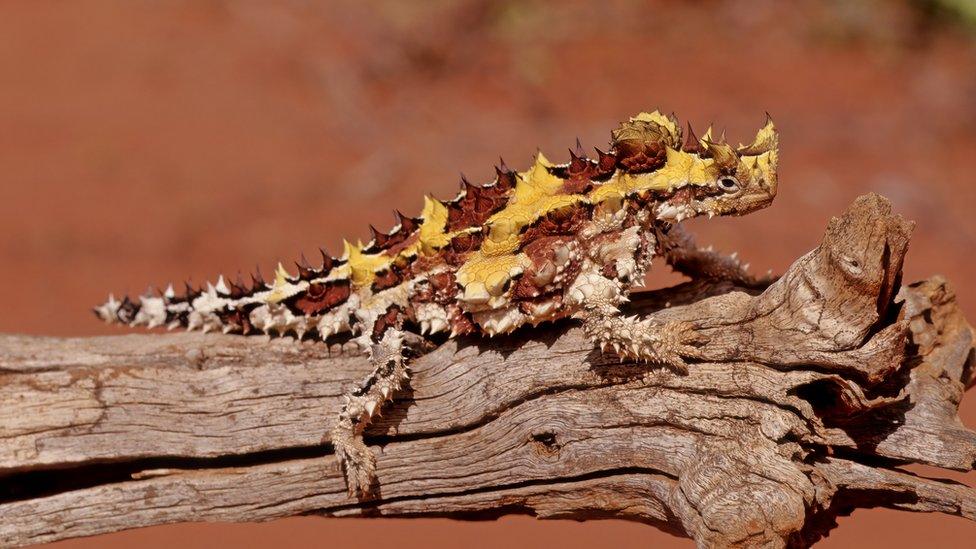Northern marsupial mole: Rare blind creature photographed in Australian outback
- Published

The marsupial mole was spotted in the Great Sandy Desert
An extremely rare blind, hairy mole has been spotted and photographed in the Australian outback.
The northern marsupial mole, or kakarratul, lives in one of the most remote parts of the nation and is so elusive that authorities don't even know how many there are.
The palm-sized creatures have silky golden locks, no eyes, a stumpy tail and flipper-like hands.
Sightings of marsupial moles usually occur only a few times each decade.
This mole was stumbled upon by Kanyirninpa Jukurrpa Martu rangers - Aboriginal traditional owners who use cultural and local knowledge to look after their land - while they were working in the Great Sandy Desert, which is about 1,500km (932 miles) from Perth.
The creatures are so uncommon that their existence remains a mystery to most people, says desert wildlife expert Gareth Catt.
"[I know] somebody who spotted one but didn't know what it was - they thought it was a baby guinea pig," he tells the BBC.
The burrowing animals live within sand dunes in isolated deserts and spend very little time on the surface.
"[They] almost swim through the sand, so the main survey technique for them is to dig trenches and channels to look for their holes."
Very little is known about the cryptic creature, which is why this sighting - the second in six months - is so exciting.
People often think "there isn't a lot of life in the desert", Mr Catt says, but it is full of unique animals. From bilbies with their giant heat-releasing ears to great thorny devils - which use their spikes to channel water into their mouths - many have developed quirks which help them cope in the harsh environment.

The thorny devil is one of the desert's many weird-looking species
"A lot of wildlife in a desert if you spotted it out of context, and you didn't know what it was, it would look very unusual," he says.
Many of these animals are under-researched, Mr Catt says, and further study of them is essential for ensuring their conservation in the face of climate change.
"At the most extreme ends of the environment, it becomes really obvious when things change - that's what we're seeing in the desert."
"So that does put extra pressure on animals which are really living at the limits."
Related topics
- Published21 March 2024
